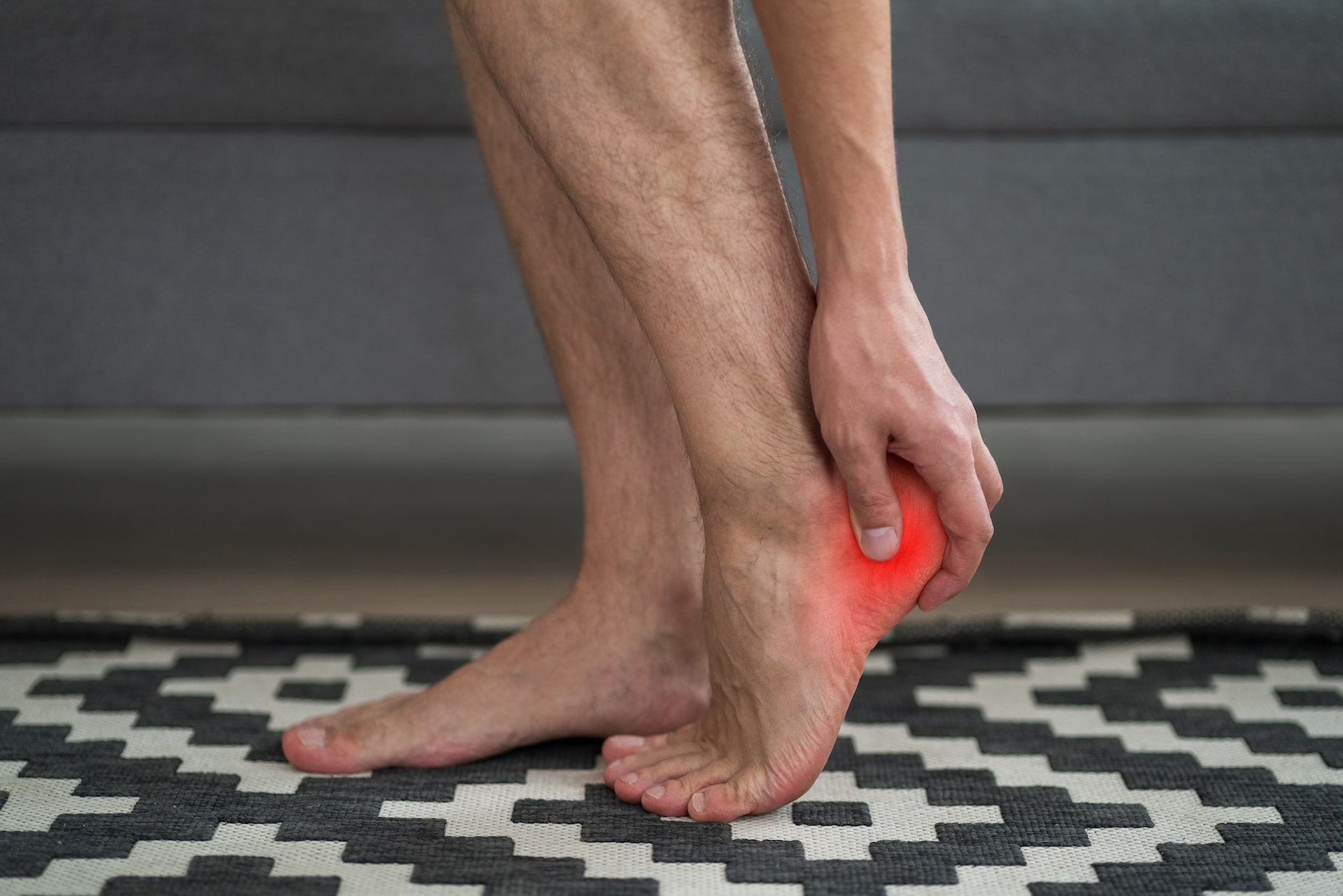Most Achilles tendon tears occur in athletic individuals between the ages of 30 and 50, but ruptures can occur in any active person. An Achilles tendon tear is a rupture of the tendon fibers, and usually occurs four to six centimeters above the heel. Some individuals suffer an Achilles tendon rupture in which the tendon actually pulls away from its insertion site on the calcaneus. For those who suffer this type of injury, a small portion of the bone may tear away as well.
As described above, the classic signs of an Achilles tendon tear are hearing or feeling a sudden pop at the back of the ankle, feeling like you’ve been hit with a baseball bat in the area, or feeling a sensation of sudden pain or a snap at the back of the ankle. The inability to walk properly or to stand on your toes is also almost always present.
If you suspect that you have an Achilles tendon rupture, immediately stop your activity, apply an ice pack to the affected area, and elevate the ankle above the level of the heart. The next step in treatment is to either go to the nearest Emergency Department or call the podiatrists at Kansas City Foot Specialists for further instruction and evaluation.
Whether you are seen in the Emergency Department or at the offices of Kansas City Foot Specialists, your ankle, lower leg, and foot will be examined to determine the extent of your injury. The back of your ankle will be examined for swelling, discoloration, and tenderness, and your doctor will look for a tell-tale gap, which is a classic sign of a ruptured Achilles tendon. This gap is created when the tendon tears, and the two ends pull away from each other. Your doctor may also perform a test known as the Thompson test, or the calf squeeze test. During this test, your doctor will ask you to bend your knee and will squeeze your calf muscle. If your tendon is torn, your foot will not move. If there is no tear, or only a minor tear, your foot will automatically flex.
Treatment of your tendon tear will depend on several factors, including the severity of your tear and any co-existing injuries. For both non-operative and operative treatments, expect at least four to six months minimum before you are completely healed. Non-surgical treatment usually includes initially placing a cast on the affected foot and ankle with the foot flexed downward, allowing the ends of the tendon to come closer together. The goal is for the body to heal itself without surgery. After the cast is removed, you will have rehabilitation such as physical therapy and possibly additional splinting. For more severe ruptures or those not responding to immobilization and physical therapy, surgery is necessary. Surgery is also ideal for those who are athletic. During surgical repair of a ruptured Achilles tendon, the two ends of the tendon are pulled together and sutured in place. The ankle is immobilized after surgery, and eventually physical therapy is implemented.
If you are experiencing pain or swelling at the back of the heel, or have any other foot, ankle, or lower leg concerns, call your podiatrist at Kansas City Foot Specialists today at (913) 338-4440 to schedule an appointment. We look forward to getting you back on your feet.



